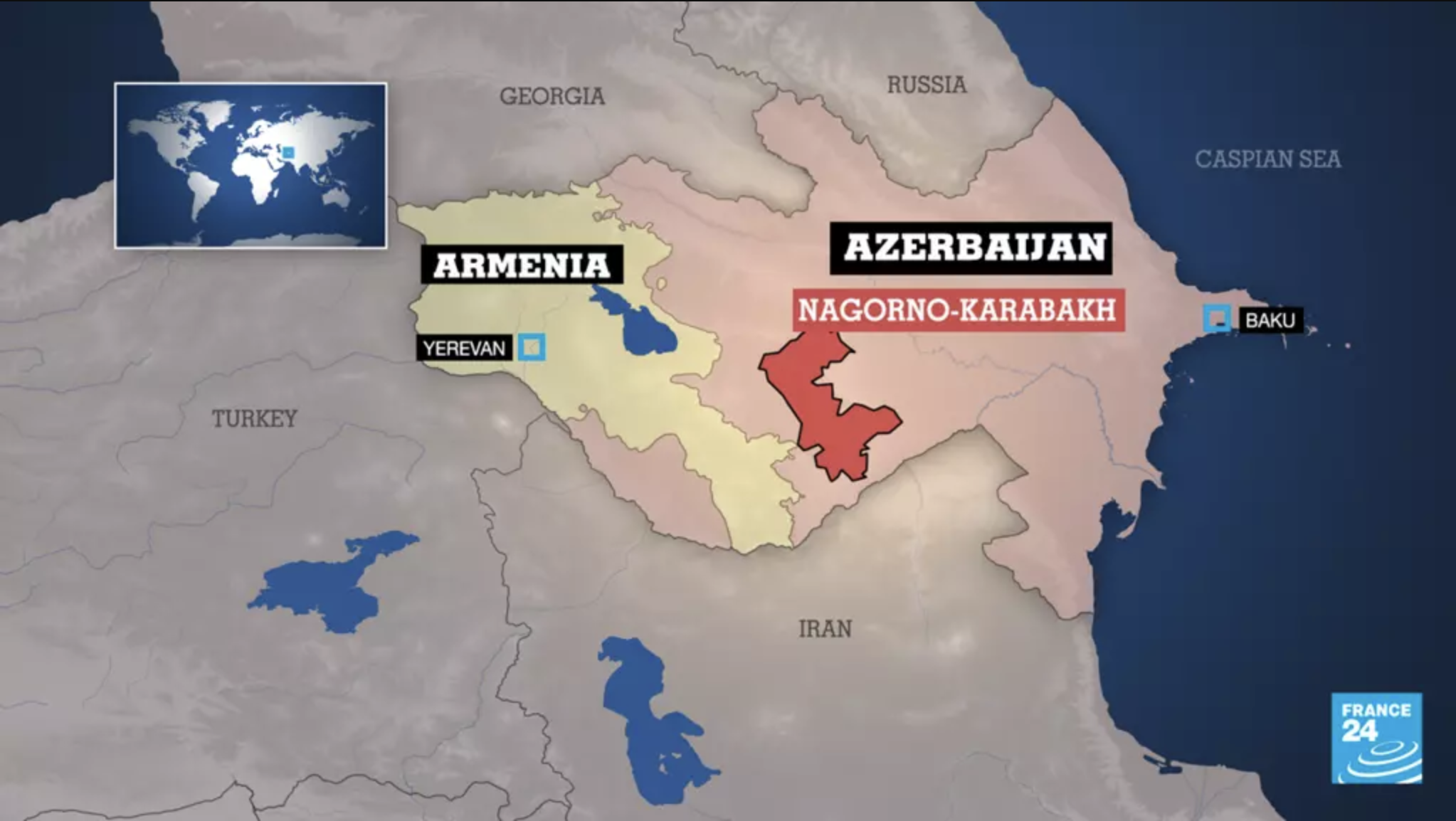Despite Russian-Brokered Ceasefire, Armenia-Azerbaijan Conflict Continues to Escalate
Map showing the location of Armenia and Azerbaijan, as well as the disputed Nagorno-Karabakh region. Source.
The recent conflict in the Nagorno-Karabakh region between Armenia and Azerbaijan appeared to be de-escalating after a Russian-brokered ceasefire on October 10th. However, armed conflict between Azerbaijan and Armenia has continued, with both sides accusing the other of breaking the ceasefire. To further complicate matters, the tangled web of competing geopolitical interests by major powers threatens to further escalate the situation into a regional conflict. There has been spillover from the fighting, with shells and rockets landing in the Iranian province of East Azerbaijan and drone crashes in Georgia. Before analyzing the current situation, it is important to first consider the recent histories of the two nations and with the disputed region in question.
Nagorno-Karabakh is a region internationally recognized as part of Azerbaijan, but it is inhabited mostly by ethnic Armenians and governed by the breakaway state of Artsakh. Although Azerbaijan maintains its claim over the territory, the Republic of Artsakh is a de facto part of Armenia, and is heavily reliant on the Armenian government despite the lack of official recognition. Initial conflicts over the region began in the 1920s after the fall of the Russian Empire, which had included both present-day Armenia and Azerbaijan in its borders. This conflict was brief and was mostly quelled by the Soviet Union, which reclaimed the region and created the Nagorno-Karabakh Autonomous Oblast (a semi-autonomous administrative zone). Disputes arose once again during the fall of the USSR, as both Armenia and Azerbaijan laid claim to the territory. A 1991 referendum led to a declaration of independence by the Armenians living in the region, who intended on reunifying with the now-independent Armenia. Azerbaijan rejected this declaration, leading to the Nagorno-Karabakh War from 1988-1994. In this conflict, ethnic cleansing and massacres lead to the displacement of Azerbaijanis living in the area. This has resulted in the demographic composition of the region changing from 21.5% Azerbaijani before the war to what is essentially a negligible percentage today. The war ended with a ceasefire along what is known as the line of contact, a large no man’s land with a large military presence on both sides. This line of contact is one of the most heavily militarized regions in the world, along with Kashmir and the Korean DMZ.
Tensions in this region have been simmering since the last border conflict in 2016, but began to escalate rapidly in the past year. After minor skirmishes in July, there were demonstrations in Azerbaijan encouraging war against Armenia. After the skirmish, Armenia began joint air defense exercises with its declared military ally Russia, while Azerbaijan began military exercises with close ally Turkey, which has historically been hostile to Armenia. Recent tensions flared last month along this line of contact, with heavy shelling by both sides. It is unclear who began the attack, with both sides holding the other responsible. Regardless, the situation escalated rapidly as tanks and aircraft were deployed, with fighting having continued over the last few weeks. While the aforementioned ceasefire gave hope of peace, the continued skirmishes threaten to draw major powers Turkey and Russia into the fold. Turkey has been accused of sending Syrian mercenaries, which is nothing new in terms of Erdogan’s foreign policy: 5,000 Turkish-backed Syrian militants were sent to support Libya’s government in its Civil War in June. While Russia has generally maintained neutrality in this specific conflict, its mutual defense pact with Armenia may give Putin license to intervene militarily in another attempt to extend the Russian sphere of influence, as he has done in Ukraine and Syria. Beyond its implications for the balance of power in the region, the conflict has been unique in the use of online propaganda efforts and unmanned drone warfare by both countries, heralding what may become common trends in warfare over the next few decades.

